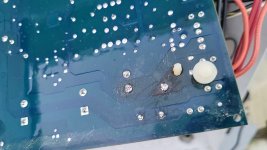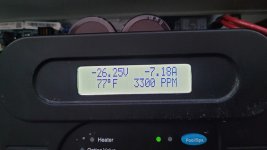Hello TFP community 
Looking for some additional advice on this issue. Thanks to this forum, I was able to troubleshoot my "No Cell Power 2" problem little over a year ago.
Re-soldering burned contact didn't work and I ended up replacing the relay. Repair process went well and system was up and running again.
Fast forward about 12 months and the problem has returned. This time re-soldering the "famous" relay works, but the fix only lasts a few days before I see "No Cell Power 2" message and have to re-solder again.
One other thing I should mention, the power supply on the right (the transformer, I guess that's what it's called) runs extremely hot. It's so hot that the entire box is almost too hot to hold my hand for a period of time. Could tat be the main reason for what I'm dealing with?
Any help / advise would be greatly appreciated.
Looking for some additional advice on this issue. Thanks to this forum, I was able to troubleshoot my "No Cell Power 2" problem little over a year ago.
Re-soldering burned contact didn't work and I ended up replacing the relay. Repair process went well and system was up and running again.
Fast forward about 12 months and the problem has returned. This time re-soldering the "famous" relay works, but the fix only lasts a few days before I see "No Cell Power 2" message and have to re-solder again.
One other thing I should mention, the power supply on the right (the transformer, I guess that's what it's called) runs extremely hot. It's so hot that the entire box is almost too hot to hold my hand for a period of time. Could tat be the main reason for what I'm dealing with?
Any help / advise would be greatly appreciated.
Last edited:




